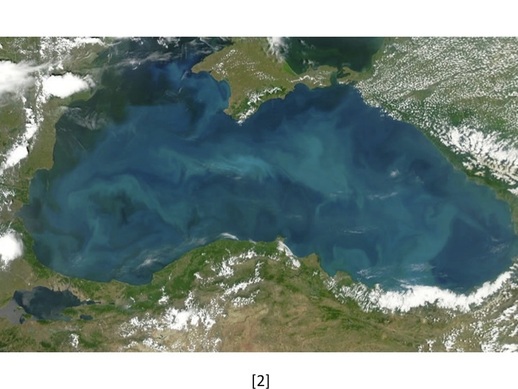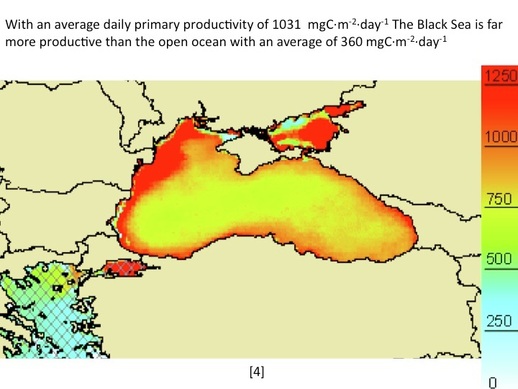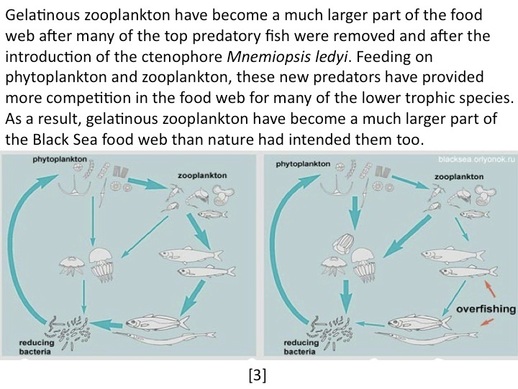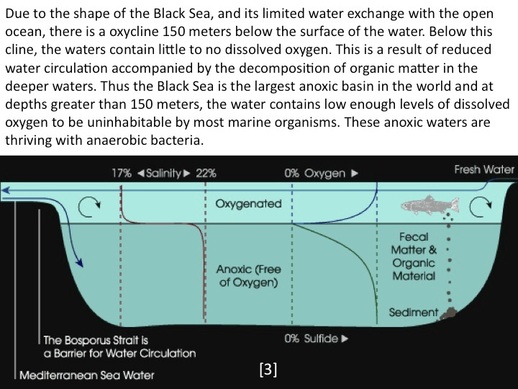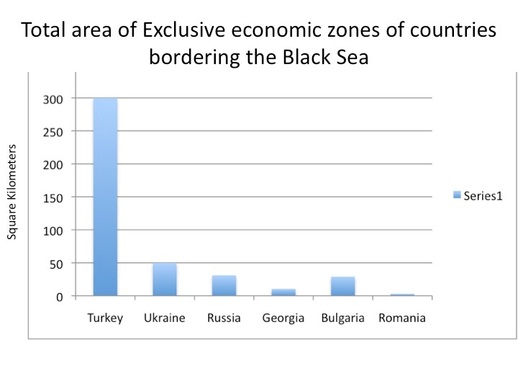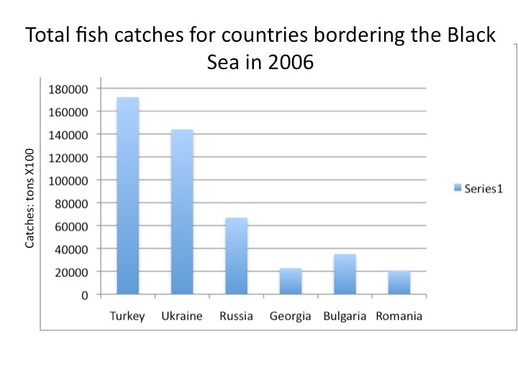The Black Sea
Introduction:
The Black Sea is the worlds largest inland sea with a surface area of 436,400 square kilometers, a maximum depth of 2,206 meters and a volume of 547,000 cubic kilometers. The Black Sea has a surface area just larger than that of the state of California. The Black Sea is an inland sea ultimatly connected to the Atlantic ocean by the mediteranean sea through the Bosphorus stright and the straight of the Dardanelles. Bounded by Bulgaria, Georgia, Romania, Russia, Turkey, and Ukraine. Due to the minimum influx of sea water and the great depth of the Black Sea basin, there are not sufficient currents to mix there is a strong oxycline between 150 and 200 meters below the surface. The dissolved oxygen content below this oxycline is so low that only bacteria can survive in its conditions. The Black sea is the largest natural anoxic basin in the world with over 90% of its water volume containing little to no dissolved oxygen [1].
The Black Sea is the worlds largest inland sea with a surface area of 436,400 square kilometers, a maximum depth of 2,206 meters and a volume of 547,000 cubic kilometers. The Black Sea has a surface area just larger than that of the state of California. The Black Sea is an inland sea ultimatly connected to the Atlantic ocean by the mediteranean sea through the Bosphorus stright and the straight of the Dardanelles. Bounded by Bulgaria, Georgia, Romania, Russia, Turkey, and Ukraine. Due to the minimum influx of sea water and the great depth of the Black Sea basin, there are not sufficient currents to mix there is a strong oxycline between 150 and 200 meters below the surface. The dissolved oxygen content below this oxycline is so low that only bacteria can survive in its conditions. The Black sea is the largest natural anoxic basin in the world with over 90% of its water volume containing little to no dissolved oxygen [1].
Table of Contents
- Introduction
- Basic information
- History
- Productivity
- Biodiversity and food web
- Habitat
- Major fisheries
- Introduced Species
- Problems
- Potential Solutions
Basic Information
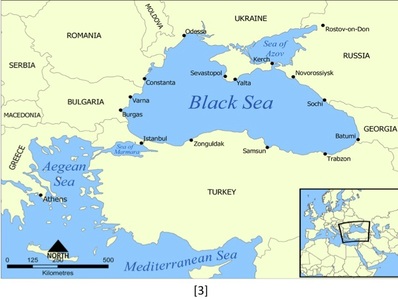
Bordering Countries:
- Bulgaria
- Romania
- Ukraine
- Russia
- Georgia
- Turkey
History
The Black Sea is a young sea; it was a brackish lake some 8000 years ago, before the Bosporus breach. In 1977, Ryan and Pitman from columbia University published the "Deluge Hypothesis" providing evidence for and stating that a massive flooding of the Black Sea about 5600 BC through the Bosporus straight. This theory suggests that the Black Sea was once a large lake unconnected from the ocean, and with the event of receding glaciers, a large flood from the Mediterranean drained into the Black Sea and carved a canyon which is now the Bosporus straight.
The Black Sea was a busy waterway and provided a means for which cultures could blend and provided a way of travel and trade. Some of these same trade routes are still used today as the Black Sea still provides a heavily traveled thoroughfare for oil, food products, and other valuable goods.
The Black Sea was a busy waterway and provided a means for which cultures could blend and provided a way of travel and trade. Some of these same trade routes are still used today as the Black Sea still provides a heavily traveled thoroughfare for oil, food products, and other valuable goods.
Productivity
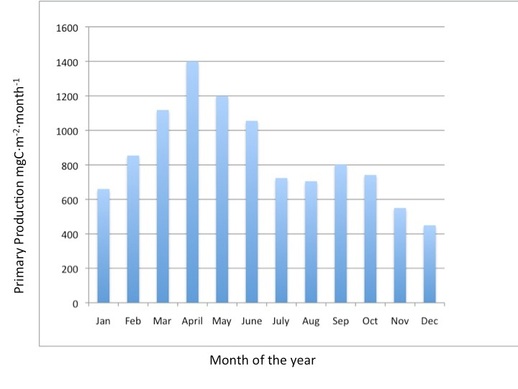
The most productive months of primary production are in the spring when northerly winds drive the surface waters south and pull deeper waters carrying nutrients up to the surface. The fall and winter months are the least productive but are still more productive than the global open ocean average of 360 mgC·m- 2·day-1
Biodiversity and Food Web
Although not as diverse as the nearby Mediterranean, the Black Sea is home to a large host of organisms. At the bottom of the food web phytoplankton such as diatoms and coccolithophores are the dominant primary producers. These primary producers provide food and nutrients to a host of zooplankton such as copepods, fish larvae and jellyfish a ctenophores. These primary consumers are the main food source for many small fish, benthic invertebrates and other secondary consumers. Prior to the 1960's, the food web in the Black Sea was dominated by billfish and tuna. Many of these large predatory fish were overfished and are now surviving in low numbers and as a result three species of dolphins and smaller predatory fish such as mackerels are top of the food chain. Nutrients that are taken from the sea grasses and phytoplankton are returned when organisms defecate and their fecal matter settles out on the bottom, but also when organisms die, if they are not consumed immediately, as they are broken down and decompose they will provide nutrients that can be utilized to complete the food chain [5].
Habitat
Changes in habitat
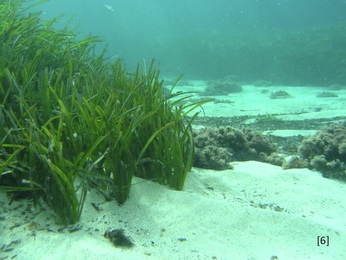
Due to the large volume of oxygen depleted water, there are limited habitats for aerobic organisms like the top shell, or european anchovies and other exploited food items. These animals are restricted to waters that are no deeper than 150 meters, thus all the benthic organisms form a ring around the black sea in the shallow waters and are absent on the sea floor. Due to the nature of the Black Sea and the straights that separate it from the Mediterranean Sea, there is no measurable tidal change. The sheer size of the Black Sea provides for wind blown currents and a small amount of tidal influx but there is essentially no intertidal zone in the Black Sea. The Black Sea marine life is full of wonders, starting right at the surfline. Wading in the shallow sandy bottom we meet crabs, molluscs and benthic fish, barely discernible, always matching their color to that of bottom: gobies, flatfish, red and golden-grey mullets, stargazer, pipefish and others. A very special benthic community of the Black Sea sandy bottom is formed by the underwater meadows of Zostera seagrass. The most diverse and interesting marine life of the Black Sea is in the rocky bottom habitats. In very shallow water, we find multicolored macroalgae, motley bright blennies, shrimps, and sea anemones. Dense jungle of brown algae Cystoseira barbata starts at knee-depth and continues to 10-15m. Several species of wrasse live between the brown branches, and make their nests of them. Miniature marine snails slide along the algal twigs, scraping periphyton off them, little crustaceans and marine worms crawl on the thalli. Big stone crabs, and the brightest Black Sea fish, red triplefin are hiding here. Schools of young mullets and Black Sea horse mackerels sweep over the crowns of the underwater forest. Smaller and paler Black Sea marine animals and plants need more effort to be discerned, but they are no less surprising than the big and bright ones - like almost invisible crab Macropodia longirostris growing bush of algae on its cuticle. Diving deeper into Black Sea one will see blotched pickerel and damselfish schools swimming around big underwater rocks. Larger fish species are seabreams; brown meagre families hide in canyons; sea basses patrol their bottom territories. A variety of marine encrusting organisms cover rock surfaces: sponges of all colors, bryozoans, plumages of hydroid colonies, sedentary Polychaeta with flowers of gills and many other most interesting marine animals of the Black Sea. Submarine rocks end at a depth of 25-45m, and sandy shelf slopes into the darkness. It's cold here; summer thermocline in Black Sea locates at 20 to 30m. This grey plain covered with mussel shells is the home for thornback skate, Black Sea turbot, gurnard, and the small shark, dogfish [7].
Major Fisheries
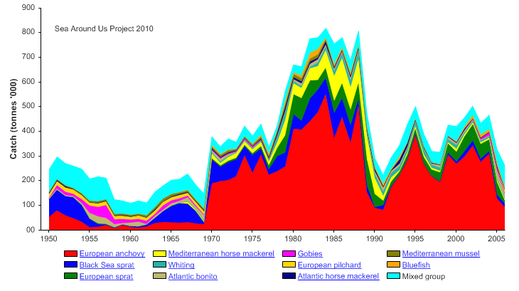
[3]
Fishing in the Black Sea has sustained many populations and provided food and work for people for hundreds of years. Commercial fishing began to pick up in the 1970's and by the 1980's, with the advance of technology, commercial fish catches exploded reaching an all time high in 1986. As a result of overfishing, higher levels of eutrophication and several introduced species, the commercial fishing industry experienced a major collapse in the 1990's and is still recovering today. . Predatory fish including tuna, billfish and mackerel were sought after due to their size and meat content. Their numbers were quickly diminished and as a result, smaller fish were beginning to be exploited and commercial fisheries began fishing down the food web. European anchovy, sprat, demersal fish such as haddock and invertebrates make up a large portion of fish catches today [3]
Fishing Gear
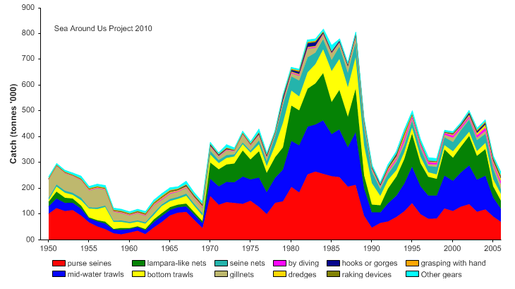
[3]
Many different fishing methods have been employed over the years. Purse seining has been a common practice and has proven to be very effective at catching many of the smaller schooling fish. Midwater trawls and bottom trawls were introduced in the 1970's and have been a major fishing technique since.
Fishing By Country
There are six countries that have exclusive economic zones within the Black Sea. Russia and Ukraine both have very large EEZ's whereas Romania, Bulgaria, Georgia and Russia have much smaller EEZ's. Below is two graphs showing the area of each countries EEZ and the amount of fish caught by each country.
Introduced Species
Ballast
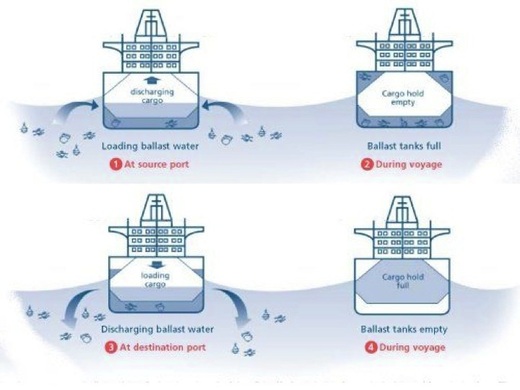
[8]
Many non-native species have been introduced into the Black Sea through a number of different vectors. The most common way and perhaps the most detrimental way for these invasive species to enter the Black Sea is through the ballast water of large sea going vessels. Ships from all around the world that travel to the Black Sea can transport eggs, larvae and adult marine species that can thrive in a new environment where there is an abundance of food and few to no predators to disrupt their population.
Mnemiopsis leidyi
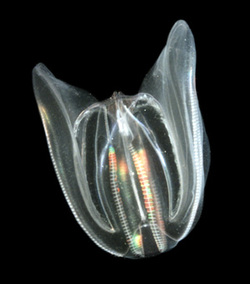
[9]
In 1980, the ctenophore Mnemiopsis leidyi was introduced to the Black Sea from the ballast water of a cargo ship from the Western Atlantic Ocean. This invasive species contributed to the commercial fishing industry collapse in 1990. This comb jelly is planktonic and consumes all kinds of phytoplankton and zooplankton such as fish and invertebrate larvae and planktonic eggs of many different species. With few natural predators and an incredible tolerance for temperature and salinity changes, M leidyi thrived in this new environment and is still thriving today. Later in 1990, the ctenophore Beroe ovata was introduced and became an invasive species, but was almost considered a blessing in disguise because B ovata consumes other ctenophores such as M leidyi. This introduced predator competes for the same food sources as M leidyi but it will also consume its competitor Mnemiopsis leidyi. This has in turn caused a decline in the ctenophore population and intentional introduction of B ovata has been thought of as a way of dealing with the invasion of Mneiopsis leidyi in other parts of the world [9].
Pollution
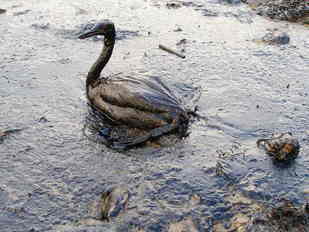
[10]
In a period of only three decades, the Black Sea has suffered the catastrophic degradation of a major part of its natural resources. Increased loads of nutrients from rivers caused extensive algal blooms, which in turn blocked the light reaching the sea grasses and algae, essential components of the sensitive ecosystem. Eutrophication is also a major contributor to the severe anoxic conditions below the surface waters. Almost one third of the entire land area of continental Europe drains into the Black Sea. It is an area that includes major industrial, agricultural and urban zones of seventeen countries, thirteen capital cities and some 160 million people. The second, third and fourth major European rivers, the Danube, Dnieper and Don, provide pathways through much of Europe carrying pollutants that are discharged into the Black Sea. On a local scale, uncontrolled sewage dumping has led to frequent beach closures and considerable losses in the tourist industry. In some places solid waste is being dumped directly in the sea or on valuable wetlands. Tanker accidents and operational discharges have often led to oil spills impacting the already fragile ecosystem. Total oil pollution input to the Black Sea is estimated at 110,840 t/yr. Of this, 48% is transported by the Danube river and most of the remainder is introduced through land based sources through inadequate waste treatment and poor handling of oil and oil products [13]. The release of large quantities of radionuclides to the lower atmosphere from the Chernobyl nuclear power plant in 1986 has had implications on the health of the Black Sea. Clouds containing radioactive material reached the Black Sea area from2 May 1986. In addition to direct fallout, the Black Sea is expected to have received an input from the Danube and the Dnepr, both of which drain watersheds heavily impacted by the Chernobyl fallout [13].
Management
The environment of the Black Sea has deteriorated dramatically in terms of its biodiversity, habitats, fisheries resources, aesthetic and recreational value and water quality [4]. This did not go on unnoticed, and in 1993 the Black Sea Environmental Programme was created. The BSEP was built by all six countries bordering the Black Sea and three primary objectives were established: to improve the capacity of Black Sea countries to assess and manage the environment; to support the development and implementation of new environmental policies and laws; and to facilitate the preparation of sound environmental investments. Sustainable development of the Black Sea will require continued, even enhanced, international cooperation. The Black Sea Action Plan, once adopted by the six coastal countries, together with the Bucharest Convention, will form a comprehensive framework for sustainable regional management. However, success will depend on thorough implementation of the actions and commitments contained in these agreements. Governments will have to give priority to implementing and enforcing existing laws and policies, and urgent investments will be required. Black Sea coastal and basin countries will need to reaffirm their joint commitment to reducing pollution and over-exploitation of the Sea's biological and aesthetic resources [11].
Management
The environment of the Black Sea has deteriorated dramatically in terms of its biodiversity, habitats, fisheries resources, aesthetic and recreational value and water quality [4]. This did not go on unnoticed, and in 1993 the Black Sea Environmental Programme was created. The BSEP was built by all six countries bordering the Black Sea and three primary objectives were established: to improve the capacity of Black Sea countries to assess and manage the environment; to support the development and implementation of new environmental policies and laws; and to facilitate the preparation of sound environmental investments. Sustainable development of the Black Sea will require continued, even enhanced, international cooperation. The Black Sea Action Plan, once adopted by the six coastal countries, together with the Bucharest Convention, will form a comprehensive framework for sustainable regional management. However, success will depend on thorough implementation of the actions and commitments contained in these agreements. Governments will have to give priority to implementing and enforcing existing laws and policies, and urgent investments will be required. Black Sea coastal and basin countries will need to reaffirm their joint commitment to reducing pollution and over-exploitation of the Sea's biological and aesthetic resources [11].
Potential Solutions
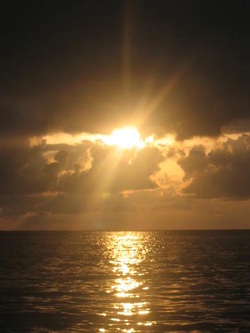
[12]
Correcting decades of destructive use of the Black Sea is a task which will require a huge initial effort during the next decade, to be followed by sustained action on a permanent basis. An assignment of this magnitude will require careful planning and coordination among the many partners who will be involved, in particular the national and municipal governments of the six coastal countries. The Black Sea Environmental Programme (BSEP) and the Black Sea Action Plan (BSAP) have both been implemented to help clean up what has been done in the past, and protect the future health of the Black Sea [11]. In the BSEP in order to improve the capacity and forge new linkages, a system of thematic working parties was established, based upon regional activity centres. Each Black Sea country agreed to host one of these centres such as an emergency response to oil spills (Varna, Bulgaria); fisheries (Constanta, Romania); pollution assessment (Odessa, Ukraine); coastal zone management (Krasnador, Russia); biodiversity (Batumi, Georgia); and pollution control (Istanbul, Turkey) [14].
Citations
[1] http://blacksea-education.ru/blacksea.shtml
[2] http://visibleearth.nasa.gov/images/6426/BlackSea.A2004143.1105.250m.jpg
[3] http://en.wikipedia.org/wiki/File:Black_Sea_map.png[1] Bakan, G and Buyukgungor, [1] The Black Sea. In Seas at the Millennium, an environmental evaluation; Sheppard, C. Pergamon: Amsterdam, 2000; Volume 1, chapter 18, page 285
[4] http://www.seaaroundus.org/
[5] Tokarev, Y. and Shulman, G. (2004) Biodiversity in the Black Sea: effects of climate and anthropogenic factors. Hydrobiologia, volume 580, number 1, pg 23-33.
[6] www.algaebase.org
[7] http://www.grid.unep.ch/bsein/tda/files/preface.htm
[8] www.eoearth.org
[9] http://www.eoearth.org/article/Aquatic_invasive_species
[10] http://commons.wikimedia.org/wiki/File:Oiled_Bird_-_Black_Sea_Oil_Spill_111207.jpg
[11] http://www.grid.unep.ch/bsein/tda/files/preface.htm
[12] http://commons.wikimedia.org/wiki/File:Black_sea_(1).jpg
[13] The Black Sea. In Seas at the Millennium, an environmental evaluation; Sheppard, C. Pergamon: Amsterdam, 2000; Volume 1, chapter 18, page 294
